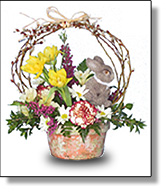Your Garden needs to be Decorated too!
Landscape Designers use signs to imitate the layout of your yard and where the new plants will be put in your yard. How to read a design plan correctly is what we attempt to educate you through this article.
Man-Made Parts in a Landscape Design Plan
To begin with we will look for the man-made parts of your plan:
Buildings: Identifying buildings on your plan is probably the easiest part. Often buildings are drawn as blocked out areas that look very much like your home or shed or whatever other building is on the land.
Walks: Walks are also easy to identify; a solid line indicates them. Driveways are drawn in much the same way; they are often larger though. They may be filled in with the material that will be used to make them. Odd shaped dots, circles and flecks indicate concrete. Brick is designated as rectangular blocks, and flagstone looks like interlocking stone.
Fences: Fences may also be shown on your plan. Fences most often are drawn as two parallel lines.
Underground Utilities: Underground utilities are most often drawn in design plans as dotted lines which are used to show the outline of the utility.
Identifying Plants in a Landscape Design Plan
The other element of a design plan is plants:
Deciduous trees will be large circles, and deciduous shrubs will look like smaller versions of the trees. Evergreen trees are large circles drawn with jagged lines (it is easy to identify evergreens if you remember that they have needles) evergreen shrubs are also simply smaller versions of the trees. A formal hedge will have straight edges, and an informal hedge will look like a grouping of either deciduous or evergreen shrubs.
Flower beds are drawn in whatever shape is desired. Shapes are drawn inside to indicate different types of flowers. Either numbers or letters are put inside these shapes and a key is provided so that you know what flowers are to go where.
Other Signs
You may also see arrows on your design plan; these arrows show the slop in the land and allow designers to know where water will drain. This helps in making decisions about what to plant where. You may also see wavy lines; this most often indicates a water feature of some kind, like a pond or fountain. You may also see dotted lines coming from certain areas of your home. The dotted lines indicate the view from windows or doors of the house and are used to help the designer decide placement (you wouldnt want to wake up in the morning look out your window and only be able to see a huge tree trunk). Many landscape designers will try to make the plan as readable as possible by making the objects in the plan look as much like the real life version as possible, so with just a little knowledge anyone can read the plan. Designers also draw everything to scale. For example, the to scale size of a circle for a tree will be its size at maturity. If you do not know what something is on your plan, call the designer, they are always happy to help you get the most out of your plan.
|

